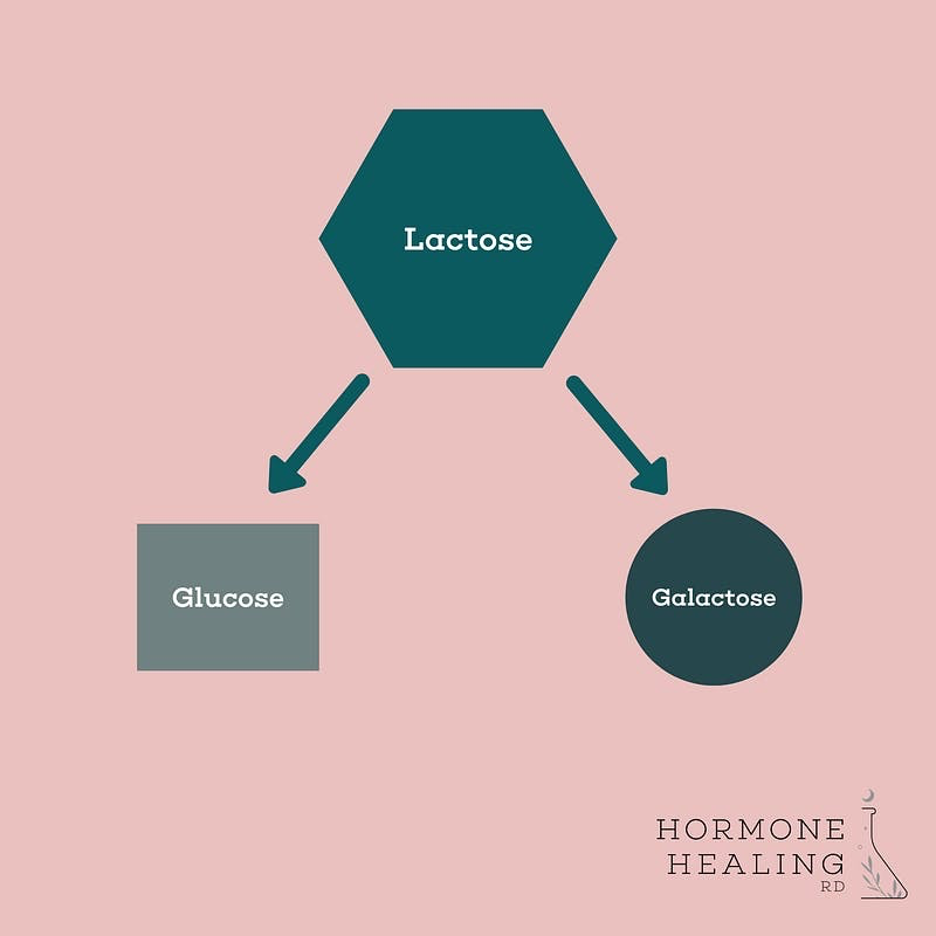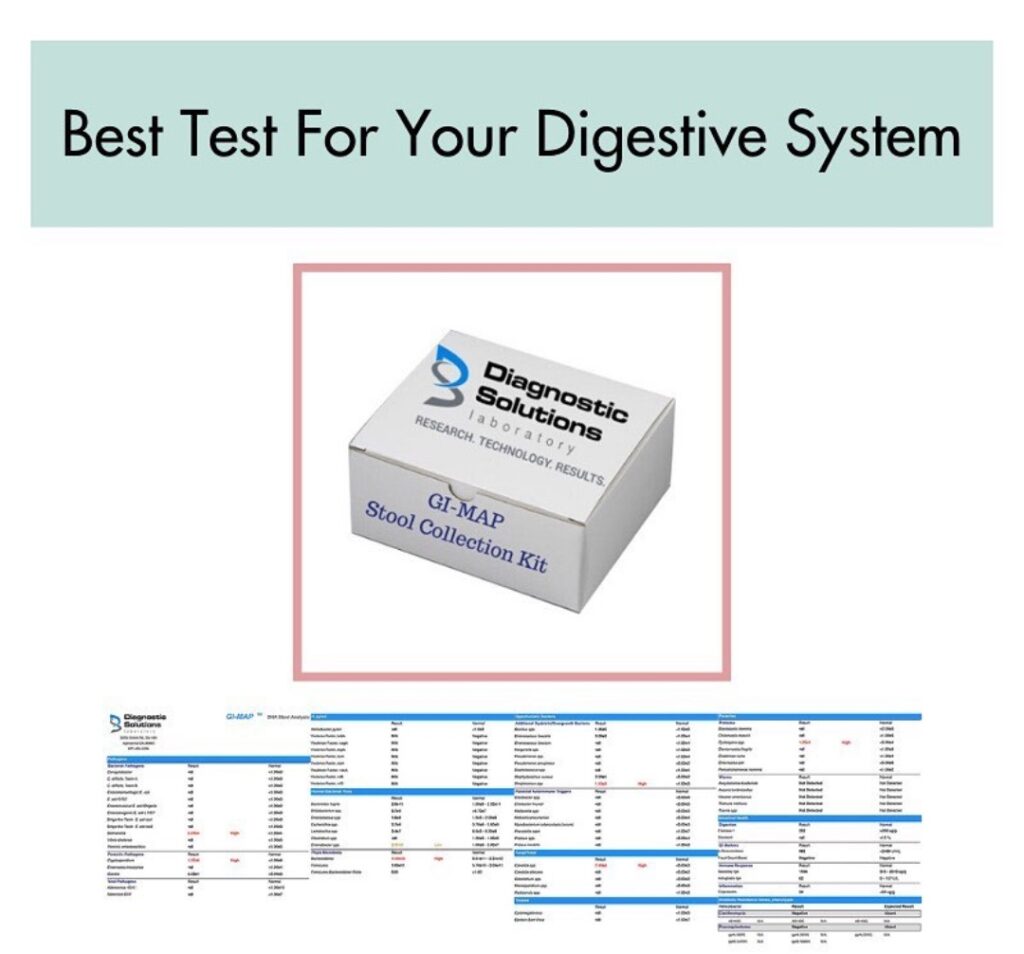Are you one of the many individuals who suffer from symptoms of dairy intolerance? As a dietitian, one of the most common questions I’ve received is, why can’t I tolerate dairy? Answering that question isn’t as simple as one might think. There are several factors to consider. Before I dig into one of the most common reasons I see that women can’t tolerate dairy, I want to say that everyone is unique and has their personal health history. Dairy may or may not be appropriate for you–that’s for you to experiment with and decide.
How does gut health relate to dairy intolerance?
1. The breakdown of dairy. Dairy contains protein, fat, and carbohydrates. The carbohydrate in dairy, lactose, is the component that most people have difficulty with. Some people do well with items like cheese (low in lactose), but can’t tolerate milk (high in lactose). Lactose is a disaccharide, which means it contains two smaller types of carbs–glucose and galactose. To digest lactose properly, we have to break it down into glucose and galactose. Lactase is the enzyme that allows us to break down lactose properly. Lactase is produced by cells called enterocytes, which line the brush border of our intestinal walls.

2. Gut inflammation. When we have inflammation in the gut our microvilli become blunted, causing inadequate production of enzymes like lactase. The result is secondary lactase deficiency. Because lactase isn’t being produced in adequate amounts, we become unable to digest lactose. This leads to a poor reaction to dairy, such as bloating, gas, diarrhea, headache/migraine, skin rashes/acne, etc.
There are a number of possible root causes of gut inflammation, the most common being:
Sometimes, there is more than one contributing factor. Poor nutrition and stress lead to poor digestion, which can allow parasites/pathogens to be made through digestion when they are normally killed. Changes in the gut’s environment lead to inflammation and, ultimately, secondary lactase deficiency.
3. Gut healing. When we get to the root of our digestive issues, we can improve our gut’s overall health and introduce dairy back into our diet.

How can you reintroduce dairy into your diet?
Do you not digest dairy well? Do you want to reintroduce dairy back into your diet? Here are the steps you should follow:
Step 1: Remove gut-irritating foods. If you don’t react well to dairy, I’m guessing you have other GI symptoms. Giving your digestive system a break can be helpful. As you embark on this process of gut healing, I recommend experimenting with the following:
Step 2: Add gut supportive foods. Incorporate food items that are easy on the digestive system. Foods such as bone brother, collagen, gelatin, coconut oil, aloe vera (juice is easy to add), eggs, and cooked mushrooms.
Step 3: Support digestion. Digestion support can include a mixture of supplements and lifestyle changes, like these:
Step 4: SLOWLY reintroduce. The biggest mistake I see people make is reintroducing dairy too quickly. You can slowly rebuild lactase by slowly reintroducing dairy. No matter where you start, start small. Start with one small cut of cheese or 1 Tbsp of yogurt or milk. Do this daily and slowly increase until you are eating your desired amount. Here’s the order I recommend:

Step 5: Test, don’t guess.
Are you still having issues? It would be best if you looked deeper into your digestive health to uncover the exact cause as to why you can’t digest dairy properly. I use a GI map stool test with my clients to see how they are breaking down their foods, healthy bacteria levels, parasite/pathogen/yeast overgrowth, and immune system functioning.

If you’ve been having symptoms of dairy intolerance, you don’t have to give it up forever. The problem may be your gut. Figure out the cause of your symptoms and go from there. Join my Master Your Minerals course, in which you’ll learn how to interpret your own HTMA and build a hormone-healing protocol based on your unique results. Check out my IGTV dairy series on Instagram where I answer questions related to dairy. Check out my previous blog post on the nutritional benefits of dairy and possible milk alternatives!
Photo by engin akyurt on Unsplash
